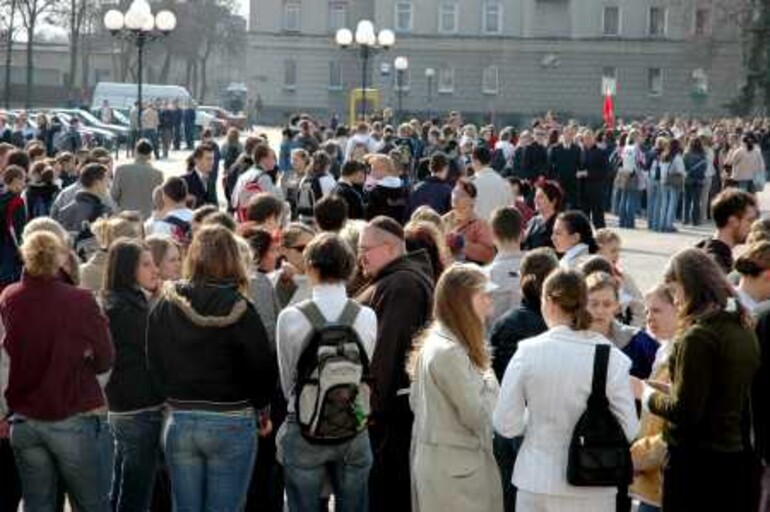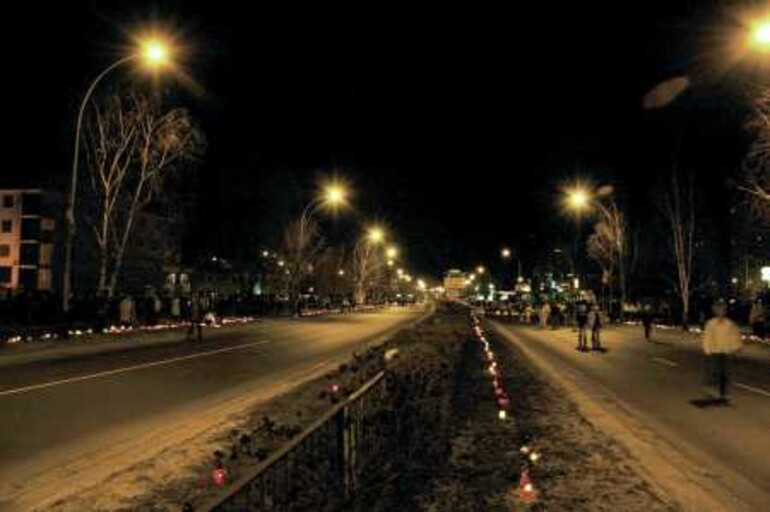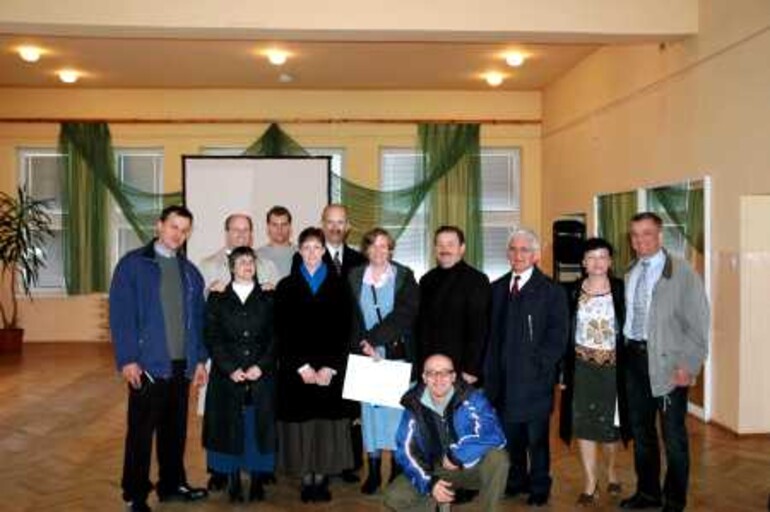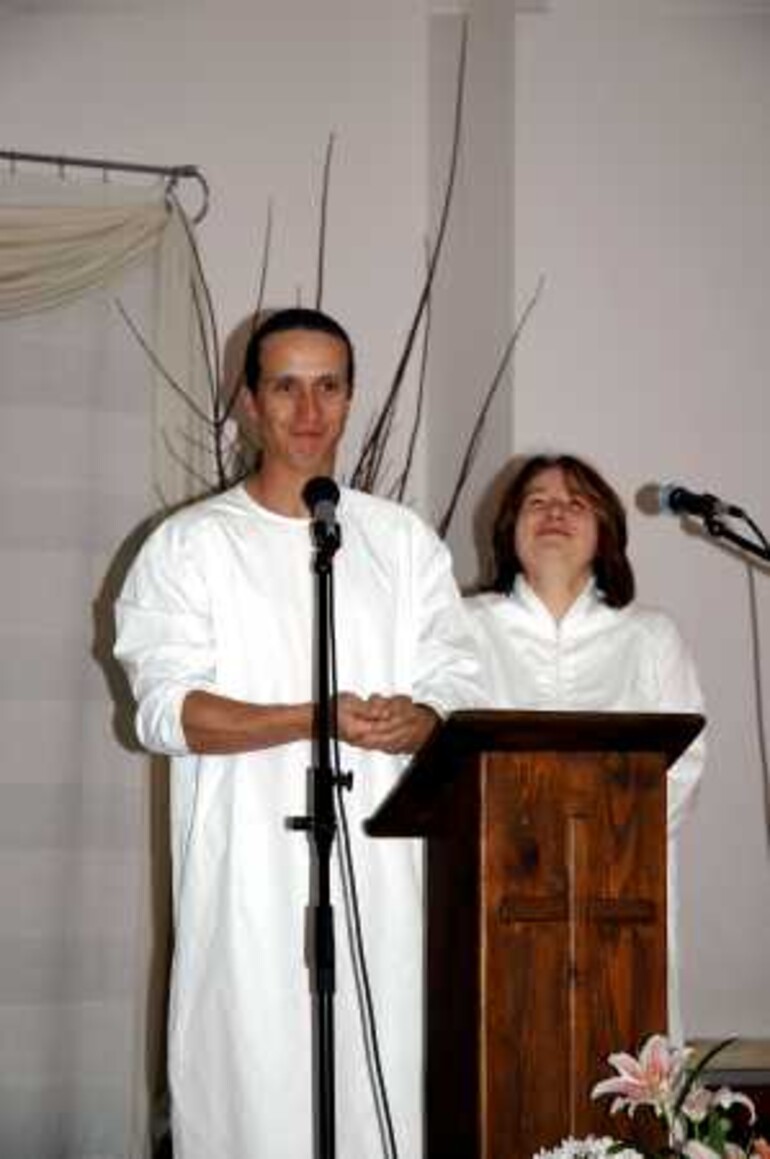The six of us from the Florence (Oregon) Church who arrived in Poland on March 29 had done everything within our power to prepare for our twin evangelistic campaigns. Months of training and planning were behind us. We had carefully researched the culture we would encounter as we conducted morning meetings in Tarnobrzeg and evening meetings in neighboring Stalowa Wola each day.
We knew before we left the airport in Warsaw that Roman Catholicism and Poland have been inseparable for centuries. We knew that Pope John Paul II was Polish, and that the Polish people identified particularly strongly with his papacy. We knew that roughly 95 percent of Poles are Catholics, and around 75 percent regularly attend mass. We had even heard that at least 25 percent of ordained Catholic priests in Europe today are Poles. We had been warned against identifying the Catholic Church in any explicit way in our public teachings on Biblical prophecy. There was no doubt in our minds that we were about to experience a Catholic culture in a big way.
We had no idea.
The visual impact of the churches is similar to that in other regions of Europe, with their roof lines and steeples soaring above the buildings around them. It is not uncommon to drive for hours and never be out of sight of a church. In contrast, in two cities, of 40,000 and 70,000, we have one organized church. It meets in a rented storefront with two rooms and a lavatory shared with other renters.
Our education continued when we met with the local congregation the Thursday evening before our meetings were to begin. We outlined our program, then invited questions. One that sticks in my mind asked if the American government was making any progress toward enforcing Sunday laws. As I probed the reasoning behind the question, it became clear that they identify Sunday laws in America as an indication that Jesus will return soon and deliver them from oppression. As I shared with them some perspectives on conditions elsewhere in the world, I saw a look of shock on their faces as they began to comprehend that in America, we do not live in constant fear of the local priests like they do.
The priests play a unique role in their society. If a priest opposes the renting of a room for public meetings, generally the meetings will need a different site. We rented a room in our second city, thanks to the willingness of a landlord to resist the pressure. We learned later that the news of our scheduled meetings reached the local priests in advance, and they warned their members against any contact with the Adventists. The Catholic deacons assigned to each of the large apartment buildings in one of our cities went through and tore down our promotional posters in their buildings.
As we began our meetings on Friday we knew that the pope’s health had been failing for several weeks. We anticipated that his death might have an effect on our effort, but there was no way to predict whether that might take place during our three-week visit. By Saturday night, we had completed our second full day of meetings. I was just drifting off to sleep when a knock came on the door, and one of my teammates told us that he had heard church bells ringing outside and turned on the BBC news to hear that the pope had died moments earlier.
My attention was centered on the mission we came to do, and it took a while before I began to absorb what a unique glimpse of this culture we were being given. School holidays were declared so students could march in processions. Portraits of John Paul appeared in the windows of homes and shops everywhere, draped in black. Somber and weeping people made their way to masses held throughout the day. No bright clothing was seen on the street for a week; no laughter or loud voices were heard in public. Many of the people seen on the street were carrying flowers or candles for the John Paul shrines that appeared everywhere. Every church had portraits of John Paul on the altars, draped in black, along with the icons of Mary and the saints. Many had bronze statues of John Paul outside, some had golden statues at the altars inside.
A public memorial mass was announced at the central cathedral in Stalowa Wola for Friday evening, just blocks from our hotel. I discovered at least 10,000 people standing in the front courtyard of the church around the statue, and spilling across the street in all directions. Many more were still on their way. Four lines of candles stretched for two kilometers down the avenue. Priests preached, choirs sang, and excerpts from John Paul’s speeches were played on loudspeakers. As the moment of his death, six days earlier, approached, a bugler played taps, and the voice of that crowd repeating “Hail Marys” in unison could be physically felt as well as heard.
In the middle of all this, a small company of Seventh-day Adventists came out faithfully day by day to participate in evangelistic meetings. A handful of guests came regularly. Adventist teenagers eagerly gave handbills announcing our meetings to strangers they met on the streets. Adventists gave literature to business contacts, public officials, and hitchhikers picked up along the highways.
I knew that evangelism would be difficult in Poland. But when the local leader told me that he had never expected any baptisms during our meetings, I realized that I had still expected to be involved in “reaping.” Everyone knows that mission trips mean baptisms, right? When I asked just what objectives he had in mind, he replied that he hoped we would encourage the believers in our two cities and strengthen the work of the gospel in that part of Poland. He reassured me that our visit met those objectives, plus two people were baptized and four people made public commitments to prepare for baptism.
I am humbled to think that anything our team might have said or done could encourage those Polish believers, working under such difficult circumstances. And I will rejoice to hear news that God’s people in Poland are ready for the harvest.














